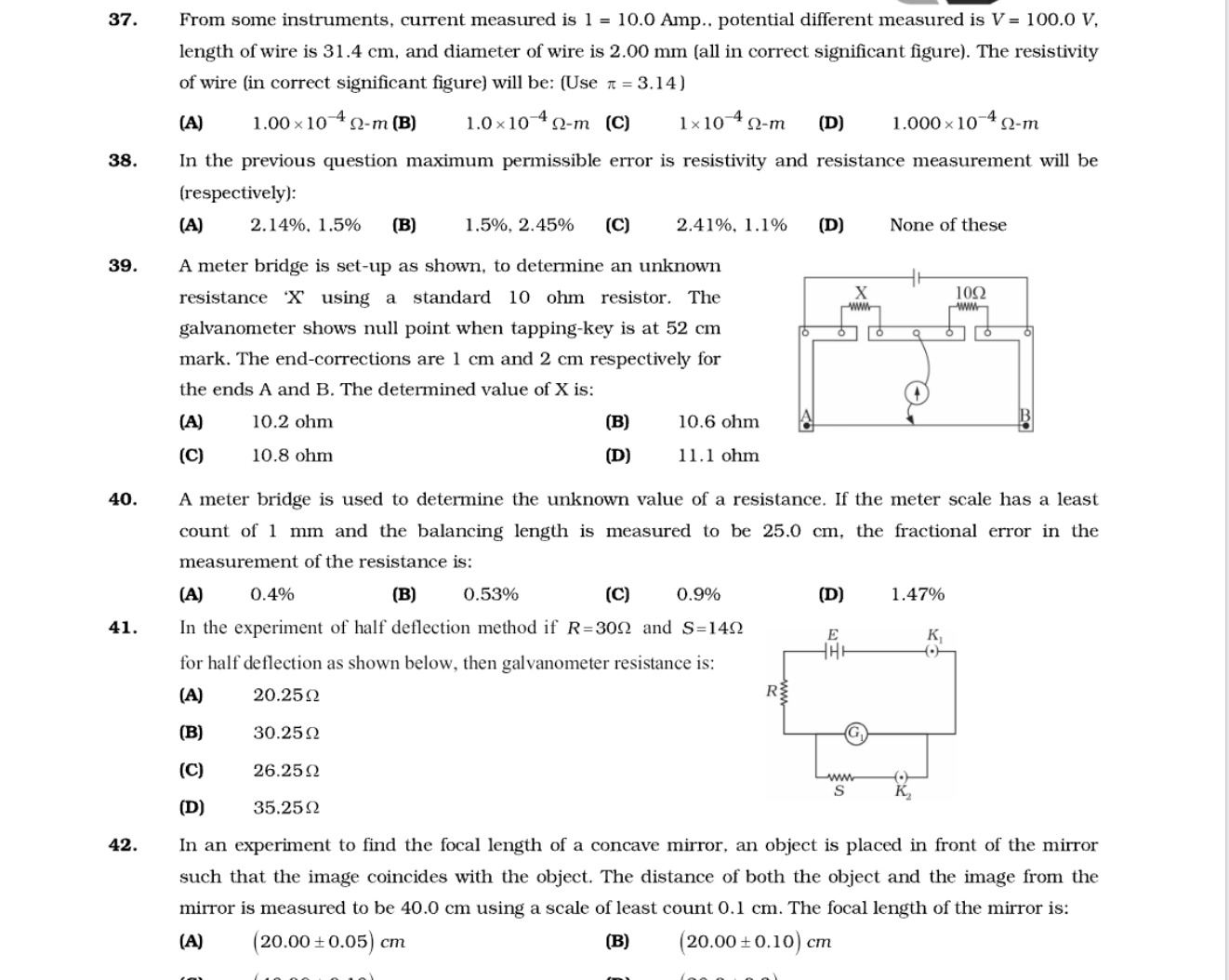Question
Question: From some instruments, current measured is I = 10.0 Amp., potential different measured is V = 100.0 ...
From some instruments, current measured is I = 10.0 Amp., potential different measured is V = 100.0 V, length of wire is 31.4 cm, and diameter of wire is 2.00 mm (all in correct significant figure). The resistivity of wire (in correct significant figure) will be: (Use π = 3.14)

1.00×10-4Ω-m
1.0×10-4Ω-m
1×10-4 Ω-m
1.000×10-4 Ω-m
1.00×10-4Ω-m
Solution
The resistance of the wire is calculated using Ohm's law: R=IV. Given V=100.0 V and I=10.0 Amp., R=10.0 Amp100.0 V=10.0 Ω.
The wire is cylindrical, so its cross-sectional area is A=πr2. The diameter d=2.00 mm, so the radius r=2d=22.00 mm=1.00 mm. Converting radius to meters: r=1.00×10−3 m. The cross-sectional area is: A=πr2=π(1.00×10−3 m)2=π×1.00×10−6 m2. Using π=3.14, A=3.14×1.00×10−6 m2.
The length of the wire L=31.4 cm. Converting length to meters: L=31.4×10−2 m =0.314 m.
The resistivity (ρ) is related to resistance (R), length (L), and area (A) by the formula: R=ρAL Rearranging for resistivity: ρ=LR×A
Substitute the values: ρ=0.314 m10.0 Ω×(3.14×1.00×10−6 m2) ρ=0.314 m31.4×10−6 Ω⋅m2 ρ=100×10−6 Ω⋅m ρ=1.00×10−4 Ω⋅m
Considering significant figures: I=10.0 A (3 s.f.) V=100.0 V (4 s.f.) R=V/I=100.0/10.0=10.0 Ω (3 s.f., limited by I) L=31.4 cm (3 s.f.) d=2.00 mm (3 s.f.) ⟹r=1.00 mm (3 s.f.) A=πr2. Using π=3.14 (3 s.f.). A=3.14×(1.00×10−3)2=3.14×10−6 m2 (3 s.f.). ρ=LR×A=0.31410.0×3.14×10−6. ρ=0.31431.4×10−6=100×10−6=1.00×10−4Ω⋅m. All calculations maintain 3 significant figures.
